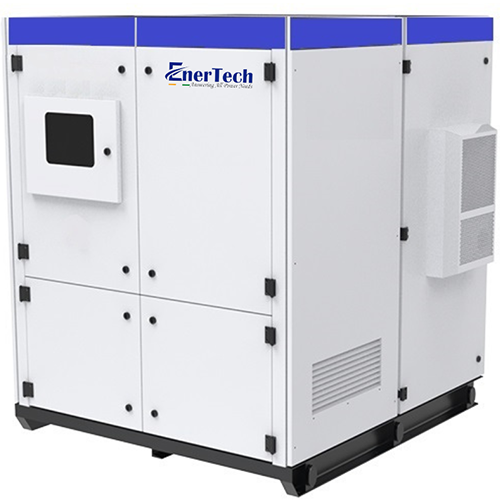The Role of Energy Storage Systems in Modern Power Grids

Strong 8k brings an ultra-HD IPTV experience to your living room and your pocket.
In today’s rapidly evolving energy landscape, energy storage systems (ESS) have emerged as critical components in shaping the future of electricity generation, distribution, and consumption. As nations transition toward renewable energy sources and smarter grids, energy storage is no longer optional—it is essential. By providing flexibility, reliability, and resilience, ESS plays a pivotal role in enhancing the efficiency of modern power grids.
This article explores how energy storage systems are transforming the way power grids operate, particularly in the context of increasing renewable energy adoption, growing electricity demands, and the need for grid stability.
What Are Energy Storage Systems?
Energy Storage Systems refer to a broad range of technologies that store electrical energy and release it when needed. The most common types of energy storage include:
Battery Energy Storage Systems (BESS) – Lithium-ion, lead-acid, and flow batteries.
Mechanical Storage – Pumped hydro, flywheels, and compressed air energy storage (CAES).
Thermal Storage – Using heat-retaining materials to store and release energy.
Hydrogen Storage – Storing excess energy as hydrogen through electrolysis.
Each of these systems serves specific use cases, but all contribute to one primary goal: balancing supply and demand in the power grid.
The Core Functions of ESS in Power Grids
1. Balancing Renewable Energy Supply
With the growing integration of solar, wind, and other renewable sources into power grids, variability in energy production has become a major challenge. Unlike fossil fuel plants, renewables are intermittent—solar panels don’t generate at night, and wind turbines can sit idle on a calm day.
Energy storage systems bridge this gap by storing excess energy generated during periods of high production and supplying it during shortfalls. This not only maximizes the use of green energy but also reduces dependence on conventional power sources.
2. Frequency Regulation and Voltage Control
Modern power grids operate at a constant frequency (50Hz or 60Hz). Any imbalance between power generation and consumption can lead to frequency fluctuations, which may damage equipment and cause blackouts.
Energy storage systems can respond within milliseconds to correct these imbalances by absorbing or releasing power as needed. This rapid response makes them ideal for frequency regulation and voltage support, ensuring grid stability.
3. Peak Load Management
Utilities often face significant demand spikes during certain hours of the day—especially in hot climates where air conditioning use surges. Traditionally, this required turning on peaker plants, which are expensive and polluting.
With ESS, utilities can store energy during low-demand periods and release it during peak hours. This peak shaving reduces operational costs and environmental impact while improving grid reliability.
4. Grid Resilience and Backup Power
In the face of natural disasters, cyber threats, or technical failures, energy storage systems enhance grid resilience. They can function independently in islanded microgrids, supplying critical infrastructure like hospitals, emergency centers, or data facilities even when the main grid is down.
Residential and commercial energy storage systems also serve as backup power during outages, offering a reliable alternative to diesel generators.
5. Reducing Infrastructure Costs
Energy storage helps defer investments in transmission and distribution infrastructure. For example, in areas where electricity demand is growing rapidly, strategically deployed ESS can relieve stress on existing grid components, delaying the need for new substations or transmission lines.
Future Outlook
According to market forecasts, global energy storage capacity is expected to grow exponentially in the coming decade. Falling battery prices, technological innovations like solid-state batteries and AI-based energy management, and supportive government policies are key drivers.
Moreover, as electric vehicles (EVs) become more widespread, vehicle-to-grid (V2G) technology could allow EVs to act as mobile energy storage units, further transforming grid dynamics.
Conclusion
The integration of energy storage systems into modern power grids is revolutionizing the way we produce, distribute, and consume electricity. From supporting renewable energy to enhancing grid stability, managing peak loads, and ensuring resilience, ESS is a cornerstone of the smart, sustainable grids of the future.
As the world continues to shift towards cleaner energy and more sophisticated grid infrastructure, energy storage will be the key enabler—bridging the gap between energy supply and demand while paving the way for a greener tomorrow.
Note: IndiBlogHub features both user-submitted and editorial content. We do not verify third-party contributions. Read our Disclaimer and Privacy Policyfor details.


